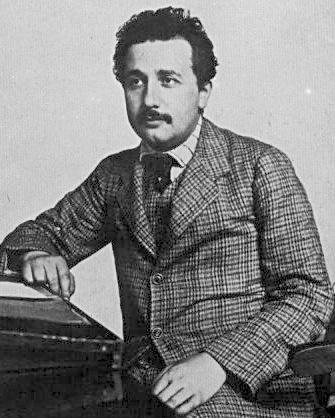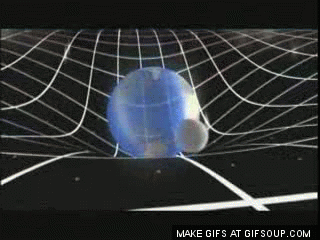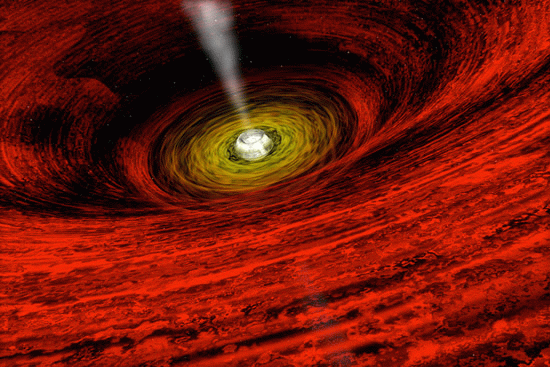Albert Einstein's Life & Times



The centennial anniversary of Einstein's general relativity paper.
"Fortunately science, like that nature to which it belongs, is neither limited by time nor by space. It belongs to the world, and is of no country and of no age. The more we know, the more we feel our ignorance; the more we feel how much remains unknown; . . . ."
Sir Humphry Davy, 1825 discourse delivered at the Royal Society.
![]()
Current week | September | October | November | Start | Visualizing change
Einstein later recalled "Something deeply hidden had to be behind things."
Panek, pp. 9-10.
"The difference between our vision of the universe and its nineteenth-century counterpart has turned out to be not a question of . . . seeing farther or deeper . . . . Instead, it is a question of seeing itself – of perception, of how we see . . . . that there is more to the universe than we would ever find, if all we ever did was look."
Richard Panek, p. 6.
"In all the history of physics, there has never been a period of transition as abrupt, as unanticipated, and over as wide a front as the decade 1895 to 1905. In rapid succession the experimental discoveries of X-rays (1895), the Zeeman effect (1896), radioactivity (1896), the electron (1897), and the extension of infrared spectroscopy . . . opened new vistas. The birth of quantum theory (1900) and relativity theory (1905) marked the beginning of an era in which the very foundations of physical theory were found to be in need of revision."
Abraham Pais, p. 26.
September | October | November | verities | Start
weeks: 1 | 2 | 3 | 4 | 5 | 6 | 7 | 8 | 9 | 10 | 11 | 12 | 13 | 14
1, Who was he and who are we?
speed of light, expanding universe, ancient origins, paradox
"The difference between stupidity and genius is that genius has its limits."
Albert Einstein.
"Fascination" a popular 1904 waltz song.
Stanford University: Spacetime Overview pages.
Personal letters interpreted. 54 letters from 1897-1903.
2, What was the "completeness" of 19th century physical science?
Kaku pp. 11-31, & Hawking pp. 3-28.
What to recall?
- Universal or fundamental forces
- fields
- forces versus fields
- theory and experiment
- describe the dichotomy
- The advice to Max Planck
- heuristic
- describe what life was like in 1870-1899.
A dialectic?
Trivia: What is the aether?
A thesis is countered by an antithesis and resolved in a synthesis.
![]()
3, When: 1895-1915 when the world shattered
"Einstein's light-centered Universe"
"He’d reinvented physics, which is just another way of saying he’d reinvented the way we all —physicists and nonphysicists alike— conceive of our place in the cosmos. . . . Specifically, he’d reinvented relativity."
Richard Panek, Smithsonian Magazine
Kaku pp. 33-57, & Panek pp. 1-34.
Comment on this passage: What does it mean in light of the Michio Kaku's second chapter?
Very young Einstein
Report – Tell us who you are in Einstein's universe and what he meant to you before the class started, what does his upbringing say to you about your own educational and family experiences?
What to recall?
- The problem and Max Planck
- Universal Electromagnetic attractive & repellent forces
- Biedermeier and "the holy curiosity of inquiry."
- Max Talmud
- "the fanciful ride taken in (Aaron) Bernstein's book"
- new theories about light
- Marcel Grossman & Mileva Marić (1897 letter)
- the "Olympian Academy" in Berne
- Michelson & Morley's experiment; the null hypothesis pp. 54-56
- Occam's Razor
![]()
What to recall?
Special relativity (1905) makes classical mechanics consistent with classical electromagnetism, or is step 2, for Kaku's idea of unification.
- "two people to see the event in such totally different ways?"
- "time can beat at different rates . . .depending on how fast you moved."
- paradox of speeding & uniform or constant motion goes undetected
- contraction of spacetime, time dilation, space compression
- "On the Electrodynamics of Moving Bodies"
- September 1905, who went to bed & for how long?
- The law of inertia [Newton's first law of motion)
- "The laws of physics are the same in all inertial frames."
- "The speed of light is a constant . . . "
- "a prodigious reservoir of untapped energy"
 Go here for list of helpful videos:
Go here for list of helpful videos:
Planck's constant:
![]()
Kaku pp. 91-111, Hawking pp. 18-66 on time & space.
Most popular in 1915, Jerome Kern's, "They Didn't Believe Me."
"My Bird of Paradise" popular in 1915
"There was more to reality than meets the eye."
Panek, p. 105.
Einstein said:
"No one who has really grasped it can escape the magic of this [new] theory."
A. Pais, p. 251.
"Einstein arrived at the general theory of relativity after thinking for eight years about gravitation. . . . and "more than a dozen papers on gravitation."
"The November 25 paper is a monumental contribution, of that there can be no doubt."
A. Pais, p. 266.
What to recall?
A "cornerstone of his new theory that stated gravity and acceleration are equivalent"
General relativity (1915) [GR] is the conceptualization of time as the fourth dimension of the curvature that is spacetime that more accurately accounts for the effects that were attributed to the force of gravity, before 1920.
- "the theory said nothing about gravity. . . "
- Planck's advice to Einstein
- November 25, 1915
- acceleration as opposed to constant velocity
- Is it irony or tragedy that as Einstein's pursuit of scientific enlightenment achieved its apex, his personal life's commitments deteriorated to unimaginable depths?
- "relate gravity to the warping of spacetime"
- "GR combines the time dimension with three dimensions of space"
- spacetime
Film:
![]()
6, The life before fame (1921 - 1923) & after.
The New Copernicus: "Arthur Eddington was keenly interested in performing the decisive experiment to test Einstein's theory."
Kaku, p. 113.
Read: Kaku pp. 113-129, & Panek pp. 55-72 & 81-114.
Two divergent images of the physical world.
"the ability of his equations to solve the structure of the universe itself."
Illustrating the 1.7 degrees of arc that Einstein's general relativity equation predicted as starlight passing the sun appears to bend in spacetime. Compare to Hawking, pp. 18-22.
- A full solar eclipse
- Arthur Eddington
- Quakers
- 9-22-1919 & 5-29-1919
- relativity theory
- J. J. Thomson, Nov. 6, 1919.
- Philipp Lenard, Hans Geiger, et. al.
- Zionism
- Nobel Prize, 1923
- Tagore -vs.- Einstein differences
- skepticism
- "the demon"
- acceleration and mass equivalency of energy
![]()
7, Initial reports written draft essay of what you have learned.
Taken from: Kaku 113-129, Panek pp. 81-114, & Hawking pp. vii-41.
What to recall?
" . . . heretofore unseen yet unfamiliar objects– unknown and pretty much unimaginable phenomena: bent light, curved space."
"This was what had so moved Einstein himself on that November evening of 1915, when his heart skipped many beats. He had explained the irregularity in the heavens by invoking a phenomenon the existence of which nobody else had ever predicted. But a further implication of this explanation had eluded him."
Panek, p. 111. Compare to Hawking.
" . . . an accomplishment of his that was arguably as impressive as the creation of a new theory of gravity. It was the creation of a new theory of the cosmos on the whole, which is to say a new cosmology, which is to say: a new science."
Panek, p. 114. Compare to Kaku & Hawking.
Max Planck Institute: General Relativity explained in a series.
Verbally tell us what you learned to prove or disprove that Einstein is the new Copernicus in that his vision of the universe has meaning today equivalent to the sun-centered vision of that great European mathematician and astronomer of the 15th & 16th centuries.
Tell us from the draft of your essay, what is significant to know about what you wrote and how you understand what the authors have written about Einstein's important contributions.
Submit the completed re-written draft on Blackboard™ by Oct. 10.
![]()
8, The debates with Bohr over the character of the universe.
" . . . mathematics is not just another language. Mathematics is a language plus reasoning; it is like a language plus logic. Mathematics is a tool for reasoning."
Feynman, R.P. (1965) "The Character of Physical Law" BBC. Reprinted by Penguin Books, 1992.
"Where is the wisdom we have lost in knowledge? Where is the knowledge we have lost in information?"
T. S. Elliot, The Waste Land.
Read: Kaku pp. 131-176. Panek pp. 81-114 & 153-167.
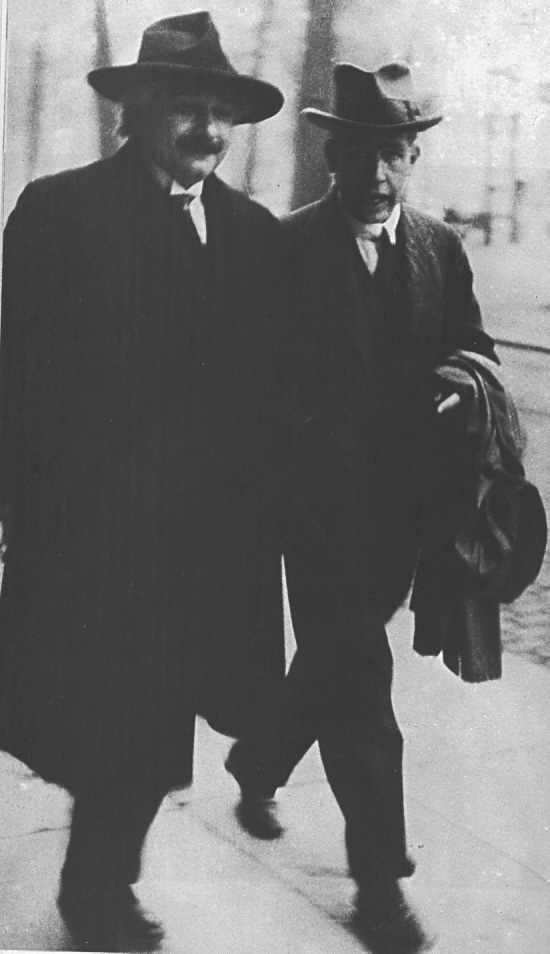 Einstein had "an unshakable belief in the coherence of a classical perspective."
Einstein had "an unshakable belief in the coherence of a classical perspective."
[Brian Greene on Albert Einstein's view.]
"As successful and far-reaching as general relativity was, it did not prepare Einstein in the mid-1920s for the fight of his life, to devise a unified field theory to unite the laws of physics while simultaneously doing battle with the 'demon,' the quantum theory."
Kaku, p. 144.
What to recall?
- "Did the universe have a beginning?"
- "disturbing and unexpected" – a dynamic universe
- what accounts for universal expansion?
- Hubble's law and Hubble's constant
- Intern's mathematical schema demands:
- expanding universe
- big bang
- "dark stars" or black holes
- reality of duality or the duality of reality?
- "gravity was caused by the warping of space and time."
- "unified field theory"
- Bose's prediction of a "super atom"
- 1909 lecture on the dual characteristics of light
- 1912 quantum theory
- Schrödinger, Dirac, Pauli
- "a new universe"
- Max Born
- uncertainty principle
- "the puzzles of probability infesting this new theory"
- Bohr and probabilities
- complexity of nuclear structure and atomic physics.
- EPR, Einstein, Podolsky, Rosen experiment
- "the universe was non-local"
- "expose the quantum theory's incompleteness."
- "to construct matter out of geometry"
![]() Atoms are complex pieces of a puzzle.
Atoms are complex pieces of a puzzle.
The size of the universe based on "a 2013 study indicated that there are 225 billion galaxies in the observable universe."
![]()
9, A shape to our universe
Massive objects warp space causing the curves in spacetime that we do not sense. "Gravity emerges from the bending of spacetime." Joe Polchinski, UCSB.
Read: Kaku legacy pp. 177-233, & Hawking pp. 67-99. & recall
The complementary relation of mathematics to physics in describing the contemporary behavior of the universe:
" . . .Hubble soon found . . .something else–that those island universes seem to be receding from our own at a rate proportional to their distance. In other words, the universe . . . – seems to be expanding."
Panek, p. 113.
- gravity and electromagnetism
- lack of field equations
- analogies: spacetime versus quantum particle "jungle"
- energy locked in atomic nuclei.
- Chadwick's discovery of 1932.
- Fermi's discoveries, 1926 & 1933.
- Elsa Lowenthal Einstein's death 1936.
- Hahn and Strassman's experiment 1938-39.
- Lise Meitner's calling it "fission" meaning to break in two.
- Read what Einstein's last home on Mercer Street was like.
- Relativity theory and Quantum theory at loggerheads.
- space is spacetime and though very large is still expanding
- is the Universe infinite?
- The universe is definitely changing in time
- Doppler shift
- Feynman's idea of multiple histories
- H or Hydrogen is the most abundant element in the universe
- Hydrogen has three isotopes: H, Deuterium, & Tritium
- The universe is an astronomical casino, Stephen Hawking.
- Spacetime versus Quantum mechanics.
- Two new nuclear forces.
Atomic nuclei as storerooms of enormous energy
A. The strong atomic force:
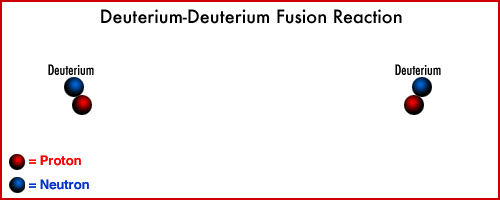
Stellar nuclear fusion existing in stars generates all of the persisting atomic elements.
B. The weak atomic force:
Two different conceptions of Electro-weak force.
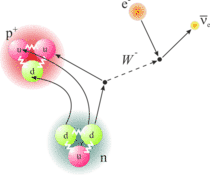 |
||
|---|---|---|
1) With quarks changing "flavors." |
||
2) The Electro-weak force without quarks. |
||
 |
||
The weak atomic force [fission] is the opposite of fusion or the strong atomic force in that manifestations of this weak force allows for radiation and atomic decay; while those manifestations of the strong atomic force bind together neutrons and protons in the nuclei.
![]()
10, Interim reports on what was the Einstein – Bohr controversy all about?
This is your take, or story, concerning the split between Einstein and Bohr over accurately describing physical existence. You may also discuss how did these two people play different roles in history?
[hint: Einstein developed both general relativity and quantum mechanics while Bohr developed the Copenhagen interpretation of quantum mechanics.]
Kaku, pp. 166-176.
Drawn from: Kaku pp. 131-176; especially pp. 166-176 is the focus. Using Panek; pp.153-167, for a framework, & Hawking, pp. 42-99 on the legacy of general relativity and quantum mechanics in astronomical terms. By doing so you will be describing Einstein's enduring contributions and suggesting the quality of his legacy.
Report verbally and turn in a written essay by week's end. November 1.
next report.
September | October | November | verities | Start
![]()
"Because his [Einstein's] work was so fundamental, reshaping the very foundations of human knowledge, his impact continues to reverberate throughout physics."
Kaku, p. 201.
Read: Hawking pp.101-154. Recall & reflect on what we know now.
"it is not consistent with other theories that have been tested by experiment."
p. 103.
"Of course, in practice even something as simple as Newton's theory of gravity produces equations that we can't solve exactly for more than two particles."
"The trouble is the sequence of events is not repeatable."
p. 104.
"The more accurately we measure the position, the less accurately we can determine the velocity, and vice versa."
Laplace versus the uncertainty principle
determinism & indeterminacy
p. 105.
"In quantum mechanics, one can, roughly speaking, accurately predict half of what one would expect to predict in the classical Laplace point of view. . . . but its state can be represented by a wave function."
"A wave function is a number at each point of space that gives the probability that the particle is to be found in that position."
p. 106.
"We cannot even suppose that that a particle has a position and velocity that are known to God but hidden from us."
"The rate at which the wave function changes with time is given by what is called the Schrödinger wave equation."
p. 107.
What to recall in Hawking's chapter 4 ?
- predict what will happen
- scientific determinism
- Marquis de Laplace
- quantum electrodynamics
- wave function
- the "uncertainty principle"
- general relativity ; the curvature of spacetime
- John Michell
- Hawking radiation
- Einstein-Podolsky-Rosen thought experiment
- "information requires energy to carry it"
" . . .the concept of absolute time was overthrown by the special theory of relativity."
p. 108.
" . . .in special relativity there is no unique absolute time that we can use to label events."
109.
"The situation was different in the theory of general relativity, in which spacetime was not flat but curved, and distorted by the matter and energy in it. . . . once we allow spacetime to be curved, the door is opened to the possibility that it may have a structure that doesn't admit time that increases smoothly for every observer, as we would expect for a reasonable [common sense view of time] measure of time."
p. 109.
"Black holes are why we think that time will not increase for every observer."
Scales:
"The escape velocity is about 12 kilometers per second for the Earth, and about 618 kilometers per second for the Sun."
p. 110.
dark stars ". . .massive bodies curve spacetime."
p. 111.
"hidden star" in French has no "sexual connotation." " a star with the mass twenty times that of the Sun."
p. 113.
• stars of twice the mass of the Sun will collapse into a singularity
p. 114.
the event horizon is explained as the light field before a "black hole."
p. 115.
The Einstein-Podolsky-Rosen thought experiment diagram and explanation
"it was Einstein who was confused, not quantum theory."
pp. 123-124.
Summary of his argument " . . .there is no prediction we can make with certainty."
p. 125.
Black holes are made up of p-branes "sheets that move through the three dimensions of space and also through seven extra dimensions that we don't notice."
p. 126.
The p-branes are regarded as sheets in a flat spacetime, and for that reason, time will flow forward smoothly. . . "
pp. 127-129.
So which one of these pictures is correct?
p. 129.
![]()
An artist conception of an event horizon.
"If one takes Einstein's general theory of relativity seriously, one must allow the possibility that spacetime ties itself in a knot and information gets lost in the folds."
p. 129.
Protecting the Past
12, "Invisibility:" how does this concept of Panek & Hawking make explaining and defending great changes in scientific discovery a significant challenge of our century?
"Reality is not an exhibit for man's inspection, labelled 'Do not touch.' There are no appearances to be photographed, no experiences to be copied, in which we do not take part."
Jacob Bronowski, p. 20.
The mature works of Freud and Einstein as creative intellects.
Read: Panek pp. 35-54 & 115-149, and Bronowski pp. 3-24.
There are two new web sites to consider:
What to recall?
defining science
universe; its attributes and demands
common qualities of art & science
"hidden potential in nature"
mechanical versus creative
"Reality is not an exhibit . . . "
changed the very way we envision & measure existence.
![]()
13, final reports – Using the framework from Bronowski to organize your thoughts, prepare a brief –four to five minute– rehearsed verbal presentation to tell the class what you have learned. Specifically what did you study in a more focused manner about Einstein's life and times and how did you learn more by doing so?
" . . . a universe that coexists with the one we thought we knew."
"Over the course of the twentieth century, we have . . . reimagined the universe. What access to the invisible has allowed us to see is the universe in motion over time."
"Just as the invisible part of the electromagnetic spectrum overwhelms the silver of visible, so the unconscious part of our existence overwhelms the conscious."
p. 205, Panek.
"If the population growth and the increase in the consumption of electricity continue at their current rates, by 2600 the world's population will be standing shoulder to shoulder, and electricity use will make the Earth grow red hot. . . . Clearly the current exponential growth cannot continue . . . when things are getting interesting."
p. 159. Hawking.
" . . . facts are the only raw material from which we can derive a change of mind. "
p. 53, Bronowski.
Read: Hawking pp. 155-202 & Bronowski pp.25-76, Panek pp. 153-207.
“We are hagridden by the power of nature which we should command, because we think its command needs less devotion and understanding than its discovery.”
p. 70, Bronowski.
What to recall?
What Einstein said.
Who were Einstein's contemporaries?
With whom did Einstein collaborate?
"a more revealing model of truth."
"mind begins to build a map."
"two ways of looking for truth. . . "
- Faith
- Knowledge through doubt
empirical study of values
DNA is the basis of life . . .
but "error or mutation" do not increase the chances of survival
Hawking is incorrect on p.161
creating improved humans
Moore's law of exponential computational speed graphic, p. 166.
"is there a natural limit?" (p. 167.)
M- theory
"matter is not smooth, but grainy." Universe, p. 176.
quarks, of up, down varieties
Russian dolls, Universe, pp. 176-177.
We live on a brane in spacetime with extra dimensions
![]()
14, Assessing Kaku, Hawking, & Panek in light of Bronowski's critique of science, research, and applied science.
Read: Panek pp. 153-207, & Bronowski pp.49-76. Tell us in a brief –four to five minute– rehearsed verbalization how these writer's ideas differ in their description of the 20th century's great changes in science.
By using Bronowski's critique of scientific research, discoveries, and the subsequent applied science we see in technology, how do these four writers (and any related authorities) describe this debt we owe to Einstein and the work of his generation?
One possible approach is to focus on:
"How do we acknowledge properly the legacy of these people in this scientific age in which so many are unaware of technology and the debt we owe to freedom of thought and humanistic restraints that Bronowski argues are revealed in the pursuit of new knowledge?"
Write a final essay based on the previous week's report on a related, but narrower focus of your choice in consultation with the instructor: Due redrafted and corrected on December 11.
Westminster Abbey's altar floor: a geometry of the four elements.
![]()
Underlying verities.
- A compass, a prism, & a radio . . .all reveal hidden realities.
- Never at rest . . . motion is an inherent characteristic
- An illusion of simultaneity . . .
- The speed of light, c, is a barrier . . . .
- Unprecedented immediacy; "You have to change the time" . . .
- Mass warps space such that we perceive acceleration as gravity's push.
- Four fundamental forces of the universe have been unified into three essentially incompatible but accurate fundamental forces of existence.
- The "nutshell" is more complicated than we can 1 think.
- Atoms are not the smallest material objects but they possess enormous energy.
- Visible light reveals only a very small sliver of the order of our universe.
- "a black hole still exerts the same gravitational pull on neighboring objects as did the body that collapsed." Hawking, pp. 115-116.
- The universe is expanding and has no center.
September | October | November | verities | Start
 How will we describe this "brane new world" and all the marvels we inhabit?
How will we describe this "brane new world" and all the marvels we inhabit?
Writing
to discover meaning and recall significance.
A theme | A thesis statement | The differences | Good writing| Narrative structure | writing guide index
There are two main books of four texts that are the readings for this class.
These are:
Michio Kaku, Einstein's Cosmos, New York: W. W. Norton, 2004.
Stephen W. Hawking, The Universe in a Nutshell: A Brief History of Relativity, Time and Brane New World. New York: Bantam Books, 2001.
Because this is a graduate course, there are two additional readings for creating a context in which to see the person in his time period (1880s-1950s). So these books are:
Richard Panek, The Invisible Century, New York: Viking Books, 2004.
And
Jacob Bronowski, Science & Human Values, New York: Harper and Row, 1972.
I have posted some of Einstein's own words in describing his ideas about relativity for the lay person — on my website — at
https://myweb.rollins.edu/jsiry/Einsteins_insights.html
Notes from the Jacob Bronowski book is also there: https://myweb.rollins.edu/jsiry/BronowSum.htm
These notes are something I post on-line for you as a student to see how I am comprehending parts of the books we will read and discuss in class together.
The rationale for the course is: What Einstein did in altering the conceptual cosmos of physical science. By cosmos or universal order it is meant in both a positivist sense and the belief that the universe is comprehensible to human inquiry using experimental, mathematical, and provable means. Einstein himself believed that physical reality had existed independently of human apprehensions.
• His influence (General relativity) on Stephen Hawking's contributions to math and science up until the discovery of the Higgs boson at CERN.
• The larger context of the 20th Century in which Einstein altered physics, technology, politics (pacifism & world government) and international diplomacy.
• The way he (Einstein) fits into Jacob Bronowski's schema of creativity (a creative mind), revealing truths about existence, and the necessity of human dignity as three requisites for good and effective scientific research to thrive.In your reports you should be able to reveal one or more of the above types of contribution's Einstein and his colleagues made.
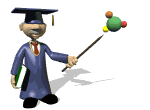 I have read the Kaku book for the third time this past month, so that would be a good place to start.
I have read the Kaku book for the third time this past month, so that would be a good place to start.
Notes from that book and the Hawking book are on the web site.
The class is discussion, with a focus on the Special — but more importantly the General Theory (100th anniversary this fall) of Relativity.
We will go slowly through the Kaku book — contrasting it with the opening chapter of Hawking's Universe . . . — You are responsible to create a three to five page summary of each author's compelling points.
Chapter three of the Kaku book is the most difficult depending on your background, but all of these readings are easier to interpret and comprehend, than Einstein's own words about special and general relativity theories.
- Measuring the size of molecules
- Brownian motion
- The photoelectric effect
- Special relativity
- How matter is like energy divided by the speed of light squared.
By mid-term (seven weeks) we will transition to Panek and then use Bronowski at the final stages as a measure of how important Dr. Einstein was as an example of the following traits.
• How was he a creative person, a champion of classical ideas about unification of universal forces, and a leader in demanding human dignity?
• How the dignity of humanity is, to his mind, the basis of our moral compass in a revolutionized world he, Einstein, contributed to making even less understandable by ordinary measures.
By any standard of ordinary measures based on common sense, or our everyday experiences, the universe is a frighteningly uninviting and unintelligible place.
To help you visualize some aspects of Einstein's cosmos, for example I note that on You-Tube there is a history channel version of Einstein that seems to follow the Kaku book and you could use that as you read difficult passages to reinforce what you are comprehending from these readings. See as well these multi-media links.
I say this because we will have three short papers (2000 words minimally) taken from the readings and a verbal presentation at and another after mid-term (during the seventh week) on the contributions and after that the legacy of Einstein's contributions based on three or more of the authors, say Panek & Kaku, or Bronowski and Hawking.
About the third week I will ask students to introduce themselves, describe their experiences and comment on what images and knowledge they have had of Einstein prior to the course — so you all get to know who one another are and what one another think about the 19th and 20th centuries, as these were the formative period of Einstein's life and work.
A time line of events in the 19th and 20th centuries can be found at: This web site.
weeks: 1 | 2 | 3 | 4 | 5 | 6 | 7 | 8 | 9 | 10 | 11 | 12 | 13 | 14
September | October | November | verities | Start
Terms to use
positivist from positivism is the belief, as Hawking asserts, that the laws of science are mathematically proven and discernible from experimental evidence and not based on impressions, inferences, or interpretation. Hawking is a positivist.
comprehensible means as Frank Wilzeck insists (see lecture notes) that despite the counter-intuitive and strange character of the universe especially at very fast speeds and in the very smallest spaces, the material world is intelligible and can be mathematically discernible. That is physical reality is recognizable and its parts distinguishable although with some difficulty.
Earth is 26,000 light years from the center of the Milky Way Galaxy Nova, 2014.
photon, the later word used to replace the lightquantum, light quantum or a "unit of electromagnetic radiation," A word first used in 1926 in modern sense, from photo- "light" + -on "unit." A photon is a boson. Its is said to transmit the electromagnetic force.
A particle that transmits a force (a boson{shown in blue the electrical force-field in yellow}) is associated with a partner particle that makes up matter (a fermion{Proton in red}). The artist's conception of a H, hydrogen atom.
An animated cartoon of a hydrogen atom; examples of proton and electron.
weeks: 1 | 2 | 3 | 4 | 5 | 6 | 7 | 8 | 9 | 10 | 11 | 12 | 13 | 14
 Sources:
Sources:
![]()
Richard Panek, The Invisible Century. New York: Viking, 2004.
Stephen W. Hawking, The Universe in a Nutshell: A Brief History of Relativity, Time and Brane New World. New York: Bantam Books, 2001.
Michio Kaku, Einstein's Cosmos. New York: W. W. Norton, 2004.
Jacob Bronowski, Science and Human Values, New York: Harper & Row, 1965.
![]()
Abraham Pais, Subtle is the Lord. (Oxford: Oxford University Press, 1982). pp.26, 29-30.
Robert Jungk, Brighter Than A Thousand Suns, Houghton Mifflin Harcourt, 1958.
The Max Planck Institute's web pages on General Relativity and its significance.
![]()
Science Animations from the University of Colorado.
A slide show commemorating the centennial anniversary by AIP; American Institute of Physics.
The Annus Mirabilis of Albert Einstein
1905.
Science Reference Section
Science, Technology, and Business Division
Library of Congress
Albert Einstein/Mileva Maric: The Love Letters.
by Albert Einstein (Author), Jurgen Renn (Author), Jürgen Renn (Editor), Robert Schulmann (Editor), Shawn Smith (Translator) Princeton University Press, 1992.
1. "can" - in this sense means: able, implying ability, "than we are able to think," or more complicated than we are capable of thinking.
MEDIA.
- HD
-
Published on Sep 18, 2014
Albert Einstein (14 March 1879 – 18 April 1955) was a German-born theoretical physicist and philosopher of science. He developed the general theory of relativity, one of the two pillars of modern physics (alongside quantum mechanics). He is best known in popular culture for his mass–energy equivalence formula E = mc2 (which has been dubbed "the world's most famous equation"). He received the 1921 Nobel Prize in Physics "for his services to theoretical physics, and especially for his discovery of the law of the photoelectric effect". The latter was pivotal in establishing quantum theory.
Has advertisements (History Channel)
-
Albert Einstein- How I See the World
-
The Extraordinary Genius of Albert Einstein The Extraordinary Genius of Albert Einstein - National Geographic 2014 Full ...
- HD
-
Albert Einstein 14 March 1879 – 18 April 1955) was a German-born theoretical physicist and philosopher of science.
- HD
Additional related films:Nagasaki Bomb silent footage
Hiroshima Atomic Bomb: The Aftermath
Documentary of Hiroshima participants [National Geographic] Disturbing Images Warning
-
In the video "Spacetime Versus the Quantum" according to Professor Joe Polchinski, two conflicts exist with regard to black holes: the entropy puzzle and the information paradox. “Quantum mechanics says empty space is not so empty,” he noted in discussing the information paradox. “Particle-anti particle pairs are popping in and out of existence. One of the pair falls below the event horizon and is lost and the other gets out. Yet quantum mechanics does not allow information to be destroyed. However, for the information to escape, it would have to travel faster than the speed of light.” Slides used in the lecture are at UCSB faculty site.
-
"What Every Physicist Should Know About String Theory" by Edward Witten. Why does string theory make it so difficult to incorporate general relativity. Quantum gravity versus a single particle. June 26, 2014. Is a heavily mathematical talk about the fluctuations in spacetime and quantum gravity.
Astronomical Calendar of events
weeks: 1 | 2 | 3 | 4 | 5 | 6 | 7 | 8 | 9 | 10 | 11 | 12 | 13 | 14
